Ever feel intimidated by the weight room? You’re not alone. Many beginners wonder if strength training is just for bodybuilders .
But the truth is, strength training offers a treasure trove of benefits for everyone, regardless of age, fitness level, or goals.
A recent study by the American College of Sports Medicine found that strength training can improve metabolism, bone density, and even mental well-being [*].
Ready to ditch the gym fear and build a stronger, healthier you? Let’s dive into the wonderful world of strength training for beginners.
Why Strength Training is Your Best Friend?

Now, you might be thinking, “Strength training? Isn’t that just for bodybuilders?” Not even close.
Strength training is for everyone, regardless of age, fitness level, or goals. It’s about building strong, resilient muscles that can handle anything life throws your way.
Here’s the science behind the magic including:
- Revving Up Your Metabolism: Muscle is a calorie-burning machine, even when you’re at rest. This means strength training can help you torch more calories throughout the day[*], making weight management and overall health a breeze. Imagine feeling energized and lighter on your feet – that’s the power of strength training [*].
- Building a Fortress of Strong Bones: As we age, bone density naturally decreases, putting us at risk for fractures. Strength training acts like a bodyguard for your bones, increasing their density and keeping you active and independent for years to come [*].
- Shielding Yourself from Chronic Diseases: Research suggests that strength training can be a superhero against chronic conditions like heart disease, type 2 diabetes, and even some cancers [*]. By strengthening your body, you’re strengthening your defense system against these health threats.
- Boosting Your Mood and Mental Well-being: Feeling stronger translates into feeling more confident and capable. Strength training has also been shown to reduce symptoms of anxiety and depression [*]. Think of it as a natural mood elevator – and who wouldn’t want a dose of that?
So, the next time you're at the gym (or even doing bodyweight exercises at home.), remember that strength training isn't just about looking good (although that's a pretty awesome perk too.). It's about investing in a healthier, happier, and more resilient you.
Getting Started with Strength Training

Imagine this: you wake up feeling motivated to move your body, but the idea of a crowded gym fills you with dread.
Don’t worry, because the good news is you don’t need a fancy membership to unlock the power of strength training. Your home can be your own personal fitness haven.
Let’s ditch the intimidation factor and explore the fantastic equipment options that can transform your living room into a strength-building zone:
- Your Bodyweight: You might be surprised by what you can achieve with just your own bodyweight. Exercises like squats, lunges, push-ups, and planks are incredibly effective for building foundational strength. A study by the American Council on Exercise (*) even found that bodyweight exercises can significantly increase muscle mass and strength in untrained individuals.
Think about it: next time you're waiting for the kettle to boil, why not do a quick set of squats? Every little bit counts.
- Dumbbells: As you progress on your strength training journey, dumbbells can be your best friend. They add an extra layer of challenge to your exercises, helping you build even more muscle. Fitness influencers like Kayla Itsines (@kayla_itsines) often showcase creative dumbbell routines that you can adapt to your fitness level.
Pro Tip: Start with lighter weights and focus on proper form before gradually increasing the weight. It's quality over quantity here.
- Resistance Bands: Don’t underestimate the power of these versatile bands. They come in various resistance levels and can be used for a wide range of exercises, targeting different muscle groups.
Here's a fun challenge: Can you create your own resistance band workout circuit that hits your upper body, lower body, and core? Time yourself and see if you can beat your own record next time. Remember, consistency is key. Aim for 2-3 strength training sessions per week, with at least one rest day in between to allow your muscles to recover and rebuild stronger.
Now, let’s break down some essential terms you’ll encounter in the strength training world:
- Reps (repetitions): This refers to the number of times you complete a full exercise (e.g., 10 repetitions of a squat).
- Sets: This signifies how many times you repeat a group of repetitions. You might do 3 sets of 10 squats for a total of 30 squats.
- Rest Periods: These are the brief breaks you take in between sets to allow your muscles to catch their breath and get ready for the next round.
Warm-up and Cool-down

Almost there. You’ve got your home gym set up and you’re ready to unleash your inner fitness warrior.
But wait. Just like a superhero needs to prep before saving the day, your body needs a warm-up to avoid injury.
Think of your muscles as cold engines – they need a little time to get going smoothly.
Skipping a warm-up can lead to ouchies (muscle strains), so here’s a super-simple routine to get your blood flowing and muscles ready to rock:
- Arm circles: Forward and backward motions for 10-15 seconds each way.
- High knees: Run in place for 30 seconds, bringing your knees up high towards your chest.
- Butt kicks: Run in place for 30 seconds, kicking your heels towards your glutes.
- Jumping jacks: Get your heart rate up with 30 seconds of jumping jacks.
Now you’re ready to crush your workout. But remember, even superheroes cool down. A quick cool-down helps your body chill out, prevents soreness, and improves flexibility.
Here are some easy stretches to cool down with:
- Quad stretch: Hold for 20-30 seconds on each leg.
- Hamstring stretch: Sit on the floor with legs extended, reach for your toes and hold for 20-30 seconds.
- Chest stretch: Clasp your hands behind your back and gently push your chest forward, hold for 20-30 seconds.
Do these stretches for each leg.
Choosing the Right Weight
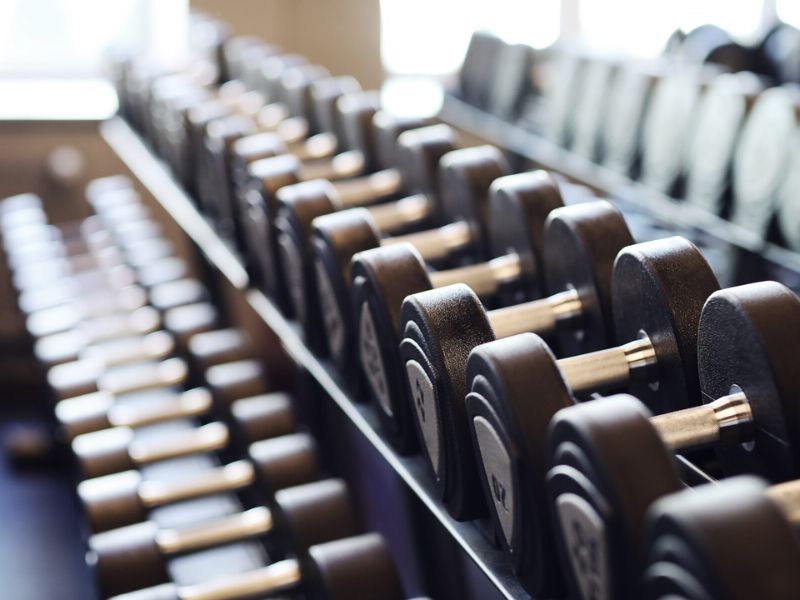
Imagine this: you’re at the gym, surrounded by weight racks, feeling a little overwhelmed.
You see someone lifting weights that look like they belong in a superhero movie, and you start to wonder, “Should I be lifting that heavy too?”
Hold on there, tiger. When it comes to choosing weights, it’s not about going all-out from the get-go. It’s about finding the weight that’s just right for YOU and your goals.
So, how do you choose the right weight?
Listen to your body: It’s a wise teacher. You should feel challenged but not strained during your reps. Aim for a weight that allows you to complete 8-12 repetitions with good form.
Your goals matter: Are you aiming to build muscle, lose fat, or simply tone up?
- Muscle Building: For muscle growth, the NSCA recommends a weight that allows you to reach fatigue within the 8-12 rep range.
- Fat Loss: Strength training combined with a healthy diet is a winning formula for fat loss [*]. Lighter weights with higher reps (12-15) can be effective for burning calories.
- Toning: This often refers to building some muscle definition while also reducing fat. A weight that challenges you in the 10-15 rep range can be a good starting point.
Here's a fun challenge: During your next workout, try a weight that allows you to complete 10-12 reps with good form. If you can easily breeze past 12 reps, it's time to increase the weight slightly. This gradual progression, called progressive overload, is key to keep challenging your muscles and seeing results.
Now, let’s talk about some fantastic exercises to target your major muscle groups:
Upper Body:
- Push-ups (modified versions available for beginners.)
- Rows (using dumbbells or resistance bands)
- Overhead press (with dumbbells or barbell)
- Chest flyes (using dumbbells)
- Bicep curls (using dumbbells)
- Tricep extensions (using dumbbells or resistance bands)
Lower Body:
- Squats (the king of lower body exercises.)
- Lunges (great for balance and coordination)
- Step-ups (using a sturdy bench or chair)
- Calf raises (can be done on the floor or a raised platform)
- Glute bridges (simple yet effective for targeting your glutes)
Core:
- Planks (variations like side planks, high planks, and low planks can also be incorporated)
- Crunches (focus on proper technique to avoid neck strain)
- Russian twists (great for targeting your obliques)
- Dead bugs (a challenging core exercise that engages your entire core)
Building Your Strength Training Routine
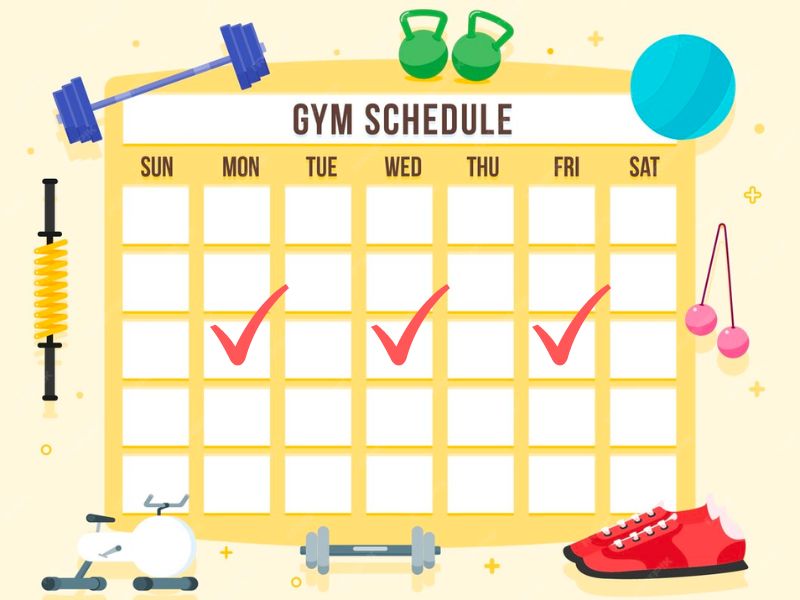
Alright, you’re pumped and ready to put your strength training knowledge to the test. Let’s build a workout routine that’s both effective and beginner-friendly.
Full-Body vs. Split Routines:
Think of your workout routine like a delicious meal. A full-body routine hits all your major muscle groups in one session, like a well-balanced plate. It’s perfect for beginners because it’s convenient and saves you time.
As you get stronger, you might consider split routines, which focus on specific muscle groups per workout (like a protein-packed lunch and a veggie-heavy dinner). This allows for more targeted training, but requires more gym time.
For now, let’s focus on a simple full-body routine you can do 2-3 times per week:
Sample Beginner Workout (2-3 times per week):
- Warm-up (5 minutes): Jumping jacks, arm circles, high knees (Get your blood flowing.)
- Squats (3 sets of 10-12 reps): The king of lower body exercises. Feeling wobbly? Try wall squats for support.
- Push-ups (modified versions okay.): (3 sets of as many reps as possible with good form)
- Dumbbell rows (3 sets of 10-12 reps per arm): No dumbbells? Water bottles or resistance bands work too.
- Lunges (3 sets of 10 reps per leg): Great for balance and coordination.
- Plank (3 sets of 30-60 seconds hold): Can’t hold a full plank? Start on your knees.
- Cool-down (5 minutes): Gentle stretches for major muscle groups (Help your muscles recover.)
Making it Harder (Progressive Overload):
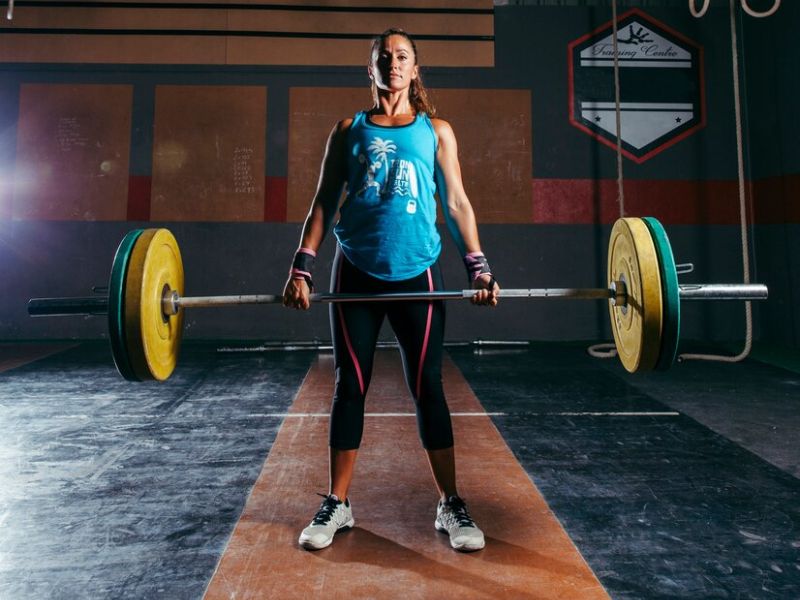
Your muscles are like sneaky ninjas – they adapt quickly. To keep challenging them and getting stronger, we need to gradually increase the difficulty (progressive overload). Here’s how:
- Lift heavier weights: As you get stronger, bump up the weight of your dumbbells or bands.
- Do more reps: Once you can comfortably complete your sets, try adding a few more repetitions.
- Add more sets: Feeling like a pro? Consider adding another set to your workout.
- Try harder variations: Mastered an exercise? Move on to a more challenging version.
Listen to Your Body:

This is your fitness journey, not a race. Take rest days when needed, and don’t be afraid to modify exercises to fit your current skill level. Here are some tips:
- Limited mobility? Bodyweight exercises like squats, lunges, and modified push-ups are your friends.
- Joint pain? Stop the exercise and see a healthcare professional. There might be better exercises for you.
Essential Exercises for Beginners
Alright, you’re ready to put your workout plan into action. Let’s break down some key exercises to target different muscle groups:
Get Pushing:
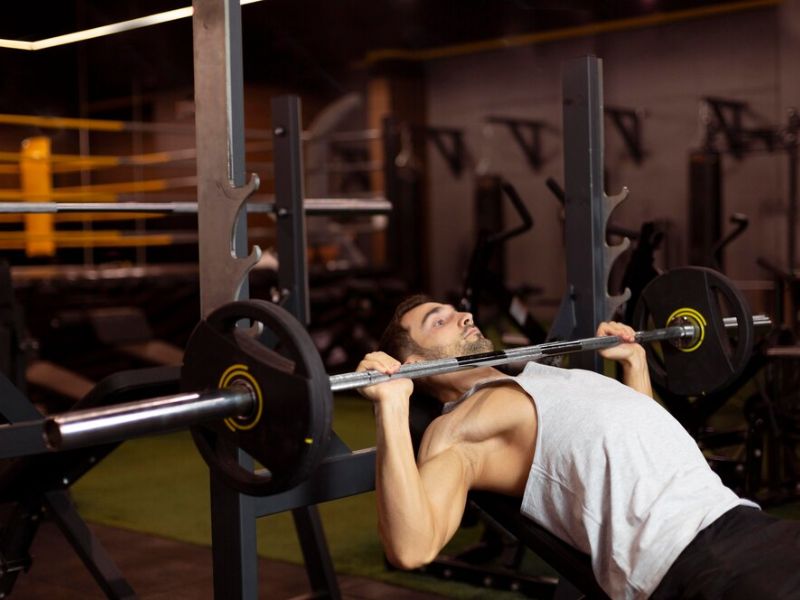
- Push-ups (modified versions for beginners.)
- Chest press (dumbbells or barbell at the gym)
- Overhead press (dumbbells or barbell)
- Dips (using a sturdy chair or bench)
- Pike push-ups (great progression exercise before regular push-ups)
Pulling Power:

- Rows (dumbbells, resistance bands, or cable machine)
- Lat pulldowns (gym machine)
- Bicep curls (dumbbells or barbell)
- Hammer curls (variation of bicep curls that targets the inner bicep)
Strong Legs:
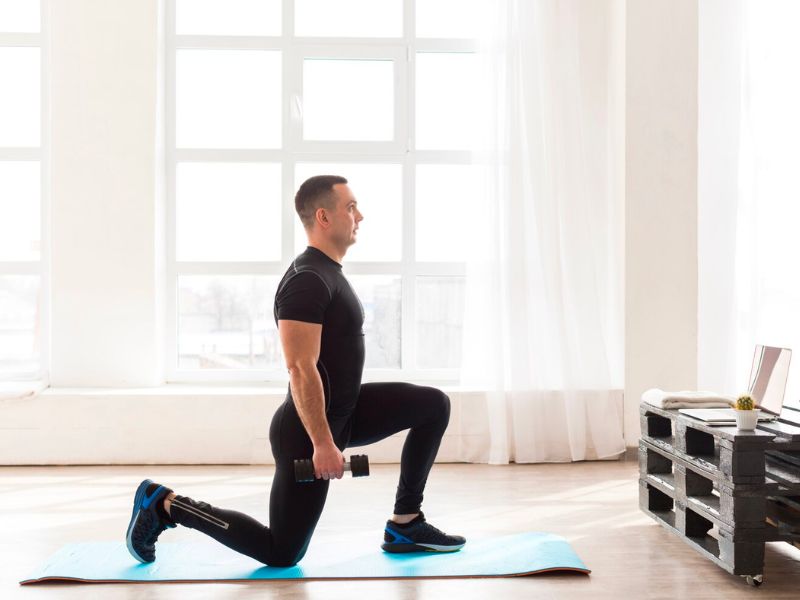
- Squats (with variations like jump squats or Bulgarian split squats)
- Lunges (with or without dumbbells, try walking lunges for an extra challenge)
- Step-ups (using a sturdy bench or chair)
- Calf raises (can be done on the floor or a raised platform)
Core Strength:
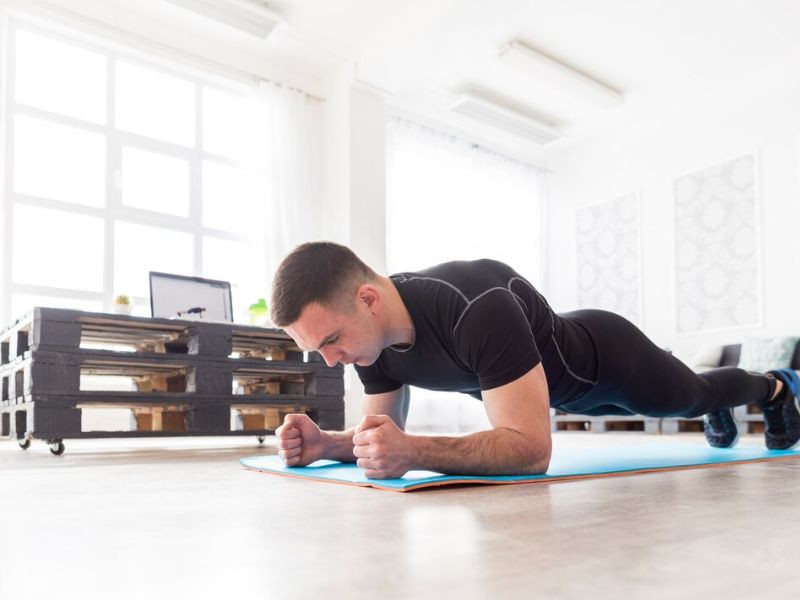
- Planks (basic, side, or high variations)
- Crunches (focus on proper technique to avoid neck strain)
- Russian twists (great for targeting your obliques)
- Dead bugs (a challenging core exercise that engages your entire core)
Bonus Moves:
- Glute bridges (with variations like single-leg bridges or weighted bridges)
- Calf raises (single-leg calf raises for added difficulty)
Safety First: Important Considerations

Working out is awesome, but gotta prioritize safety to keep the good vibes flowing. Here’s the skinny:
- Be a Form Freak: Using proper form is like having a superhero shield for your body. Wonky form can lead to ouchies (injuries), so don’t be shy to ask a trainer for help. Remember, lighter weight with good form is way better than heavier weight with bad form.
- Rest Up, Champ: Your muscles grow stronger when you rest, just like your phone recharges at night. Aim for at least one rest day between workouts to give your body time to rebuild.
- Listen to Your Body: Pushing yourself is great, but there’s a difference between “challenge accepted” and “ouch, that hurts.” Stop an exercise if you feel sharp pain, swelling, or unusual soreness. See a doctor if the pain persists or makes daily activities difficult.
- Doc Knows Best: If you have any health conditions, chat with your doctor before diving into strength training. They can give you the green light and ensure it’s safe for you.
Conclusion
In conclusion, strength training is a fantastic way to build a healthier, stronger, and more resilient you, regardless of age, fitness level, or goals.
You don’t need a fancy gym membership to reap the benefits – bodyweight exercises, dumbbells, and resistance bands are all excellent tools to get you started.
Remember to listen to your body, prioritize proper form, and gradually increase the difficulty to keep challenging your muscles and seeing results.
So ditch the gym fear, embrace strength training, and get ready to unleash your inner fitness warrior.

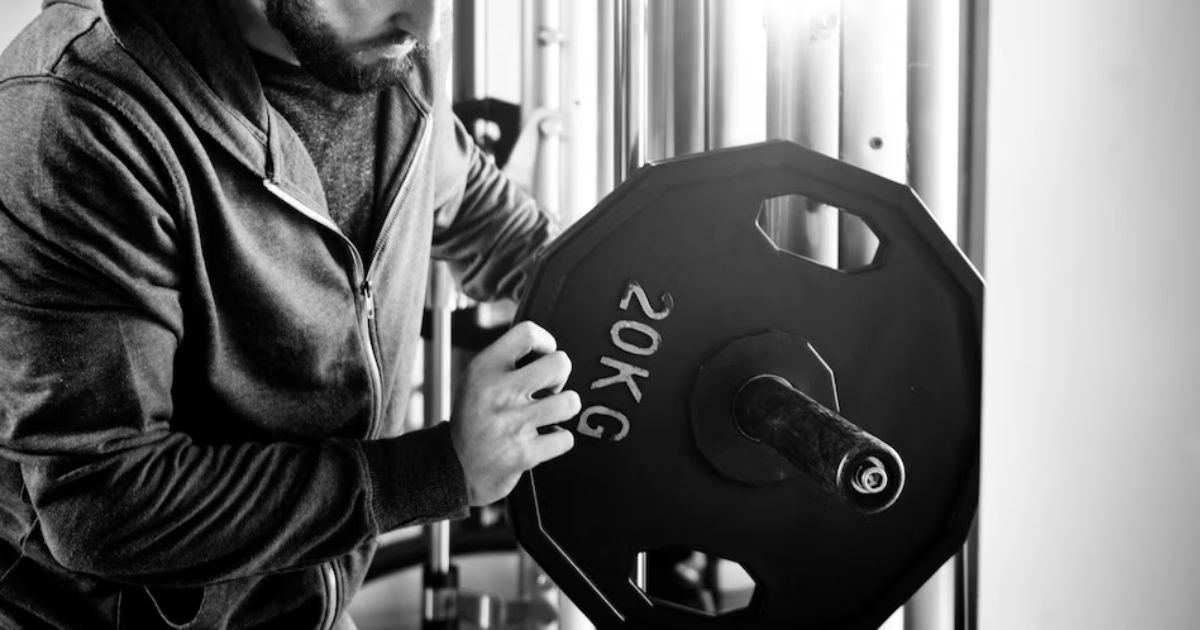
Fantastic beat I would like to apprentice while you amend your web site how could i subscribe for a blog site The account helped me a acceptable deal I had been a little bit acquainted of this your broadcast offered bright clear concept
Wow superb blog layout How long have you been blogging for you make blogging look easy The overall look of your site is magnificent as well as the content